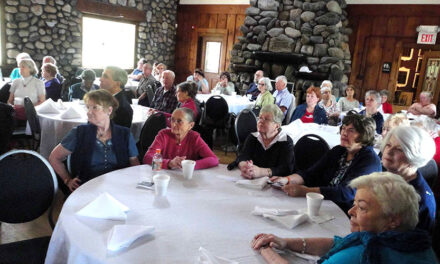Published in the July 5, 2018 edition
MELROSE — Supt. of Schools Cyndy Taymore recently reviewed the system’s School Cancellation Project for the School Committee, and it looks like the 2018 pilot program was an overall success.
Basically learning from a distance, the School Cancellation Project kicked in twice this winter because of days off due to snow. Teachers and students worked from home. For the purpose of consistency and predictability, instructors responded to emails and other communications for two hours during the snow day, while monitoring work all day. Teachers posted their “office hours” on either their website or Aspen pages. The times did not have to be consecutive and may have been spread over the hours of a typical school schedule.
In outlining everyone’s responsibilities and describing the short-term pilot project, Taymore wrote to all families back in February:
“(W)e all prefer to have students interacting in person with highly qualified educators and engaged in mutual learning with other students. We never make the decision to cancel school easily and consult with both city officials and other school districts. That will not change with this project. However, we have to be honest about the quality of instruction that takes place as we go later into June. We believe that offering students extended learning opportunities over the winter that are relevant to current units of study and have clear expectations for outcomes will be a better quality than what may occur in late June. Moreover, 21st-century students will most likely engage in some degree of online and/or blended learning in college and many will eventually work in a ‘distance’ environment from home, satellite offices, or while traveling. Similar to the work we are doing in our schools, extended learning opportunities help students acquire the necessary personal skills and work habits required in both their current and future academic and work environments.”
Taymore told the School Committee in a memo last month that after each snow day, “building principals and content directors surveyed a sampling of staff for feedback and to identify any concerns. Similarly, any emails I received from parents regarding successes, challenges, and suggestions, I immediately shared with administration so that they could address the same with their teachers. Teachers were then able to make immediate corrections and/or changes to the assignments in anticipation of the next snow day. Several parents did comment that the second day went better than the first.
“Late this spring, we surveyed families, students, and staff regarding the Snow Cancellation Project. The results of the survey are attached. The majority of families and students are in favor of the project. While some made negative comments, many more made thoughtful suggestions for improvement. I have provided the data to the Labor-Management Committee and we plan to review the data and all the comments when we reconvene in the fall.
“Suggestions centered on communication, high tech vs. low tech options, number and quality of assignments, consistency across buildings and grade levels, and when and how many days to apply the project. Some examples are below:
• Communicate better and earlier with parents about the project.
• Have paper options as well as technology options.
• Have a “stack” of plans ready to go.
• Have assignments that are more project and/or play based.
• Create interdisciplinary options to reduce the number of assignments.
• Do not use the project for all five days. (Suggestions as to when it should kick in varied.)
• Be more pro-active about special education students.
• Email parents ahead of time with assignments.
• Have teachers at the elementary level work as teams to develop similar options.
• Do not have homework for a couple days upon return.
• Rethink the ‘core’ content vs. ‘specials’ requirements.
Educators surveyed about the School Cancellation Project were asked a series of questions as administrators gathered information.
The percentages of the bulk of work completed rose from the first snow day to the next. For example, on the first day teachers said over 70 percent of their students completed their work. On the second day that number increased to 74 percent.




